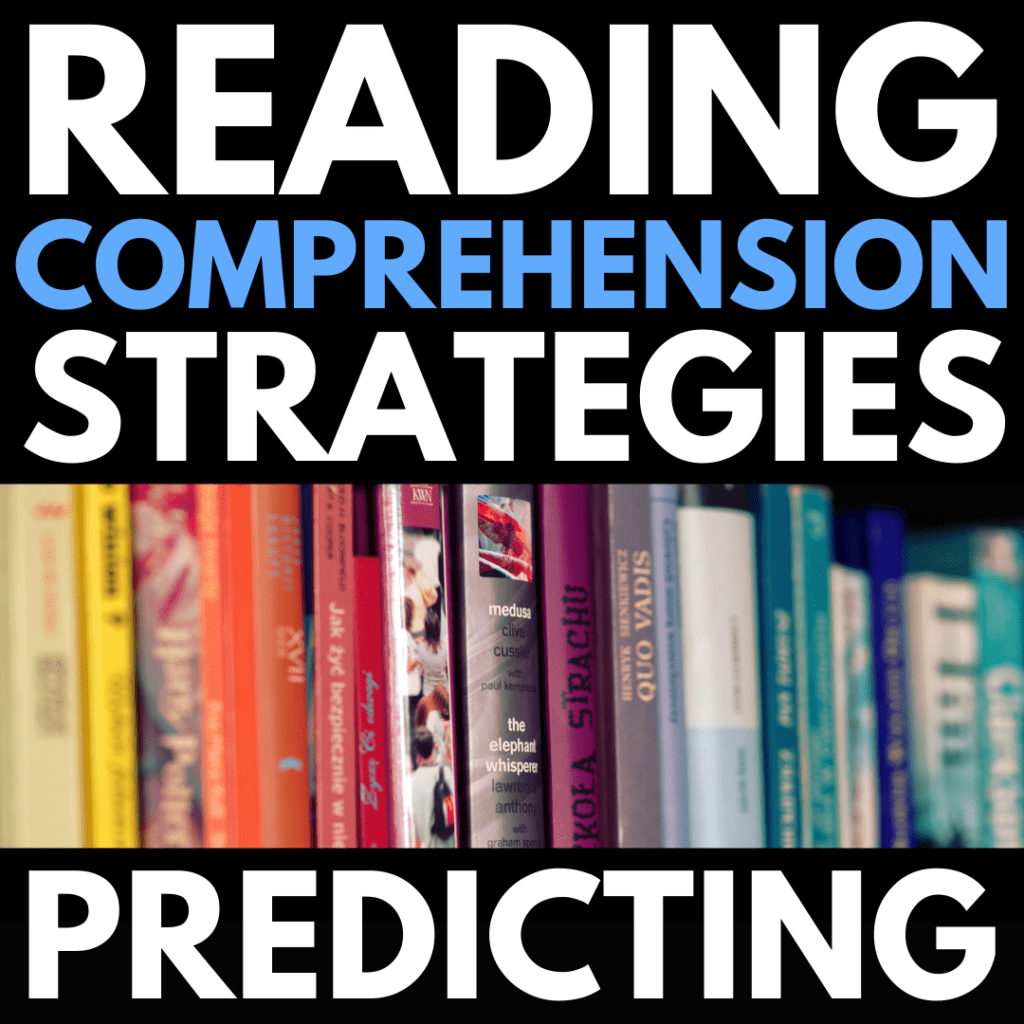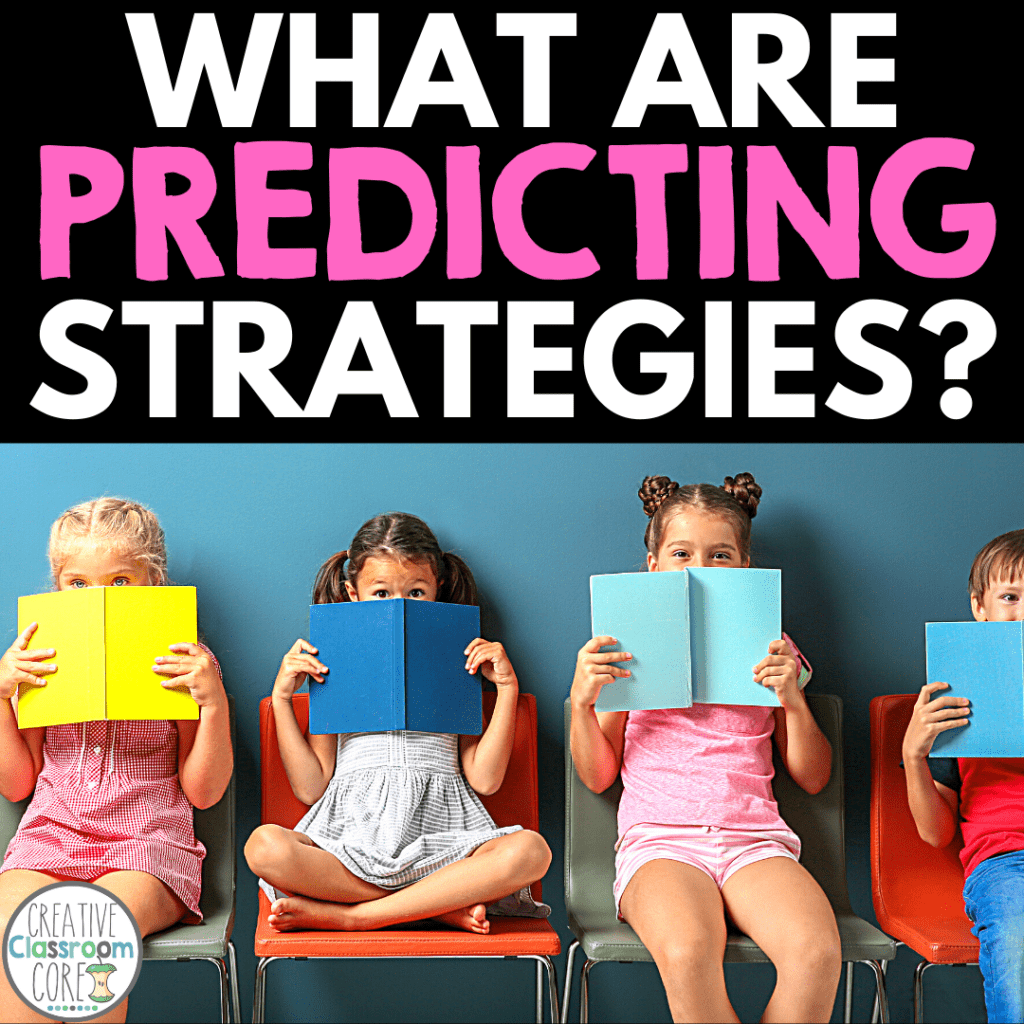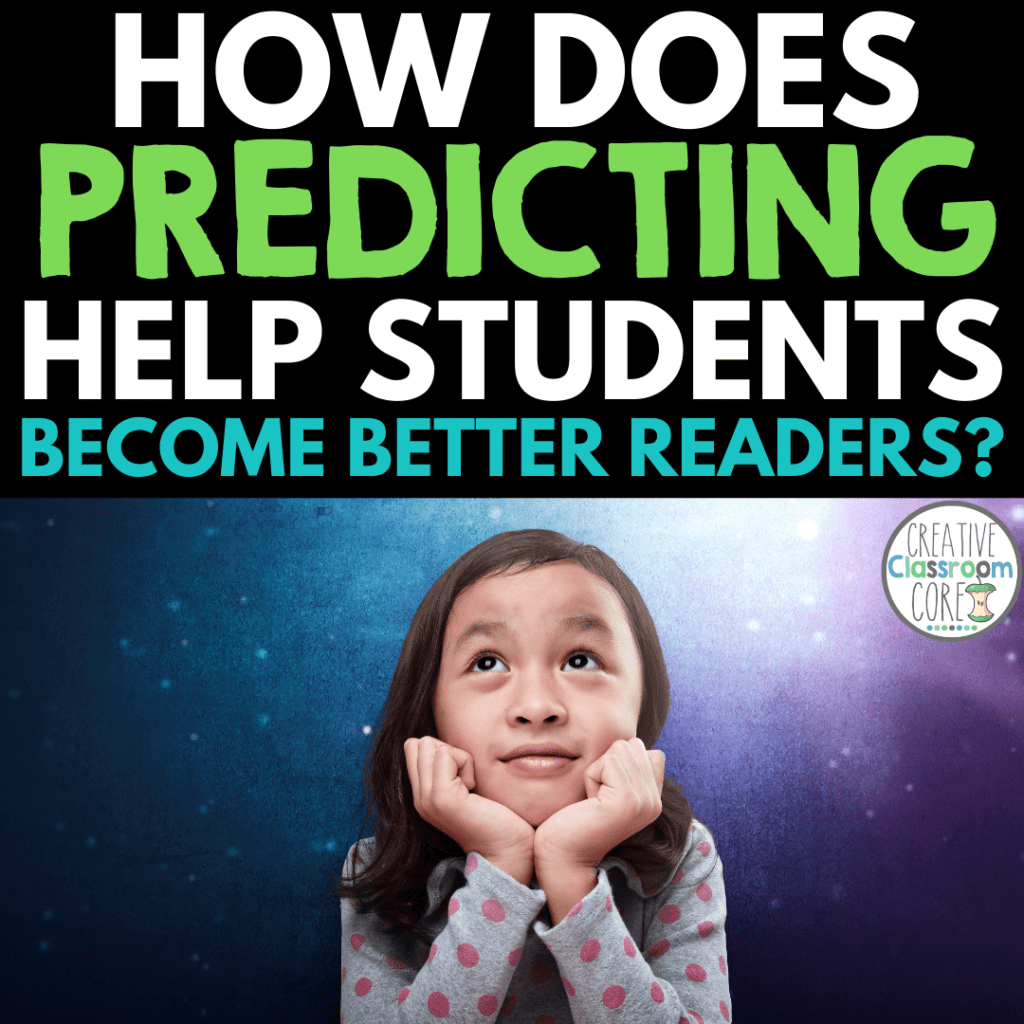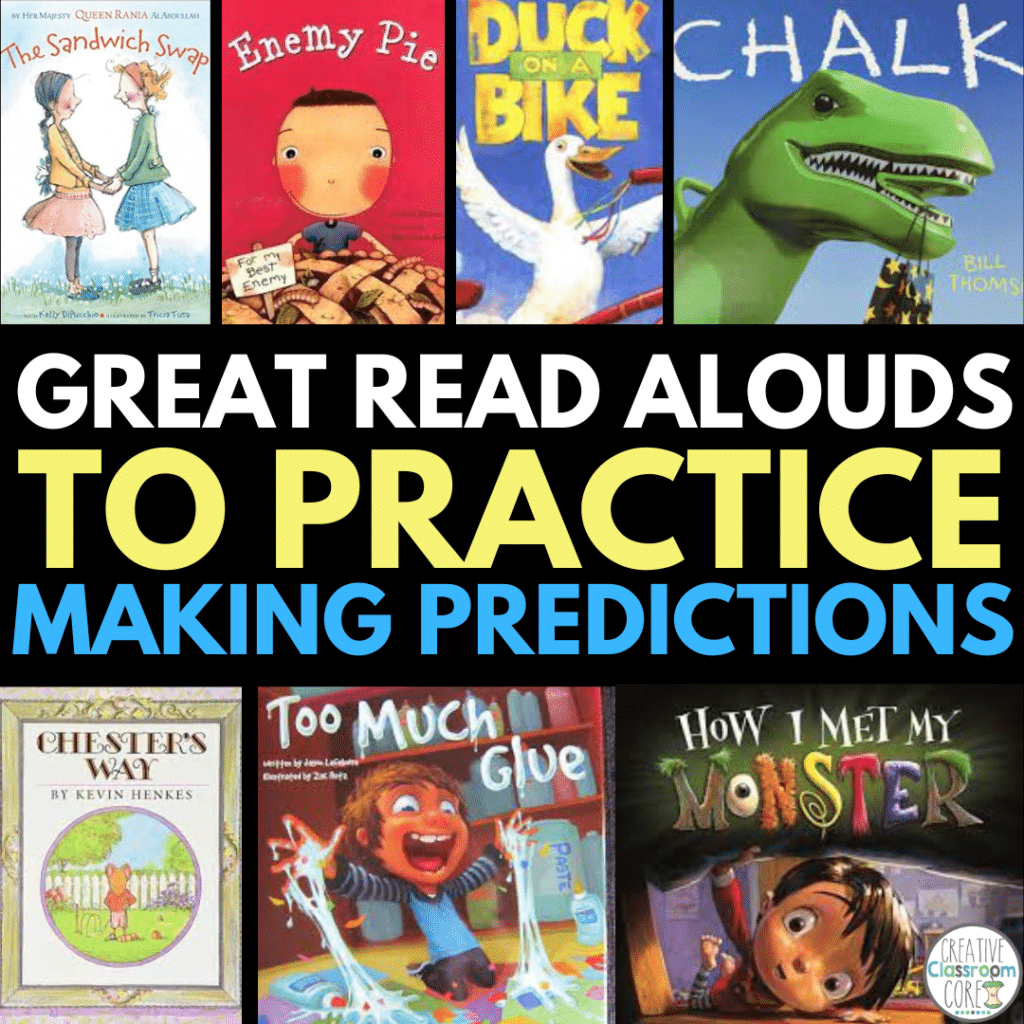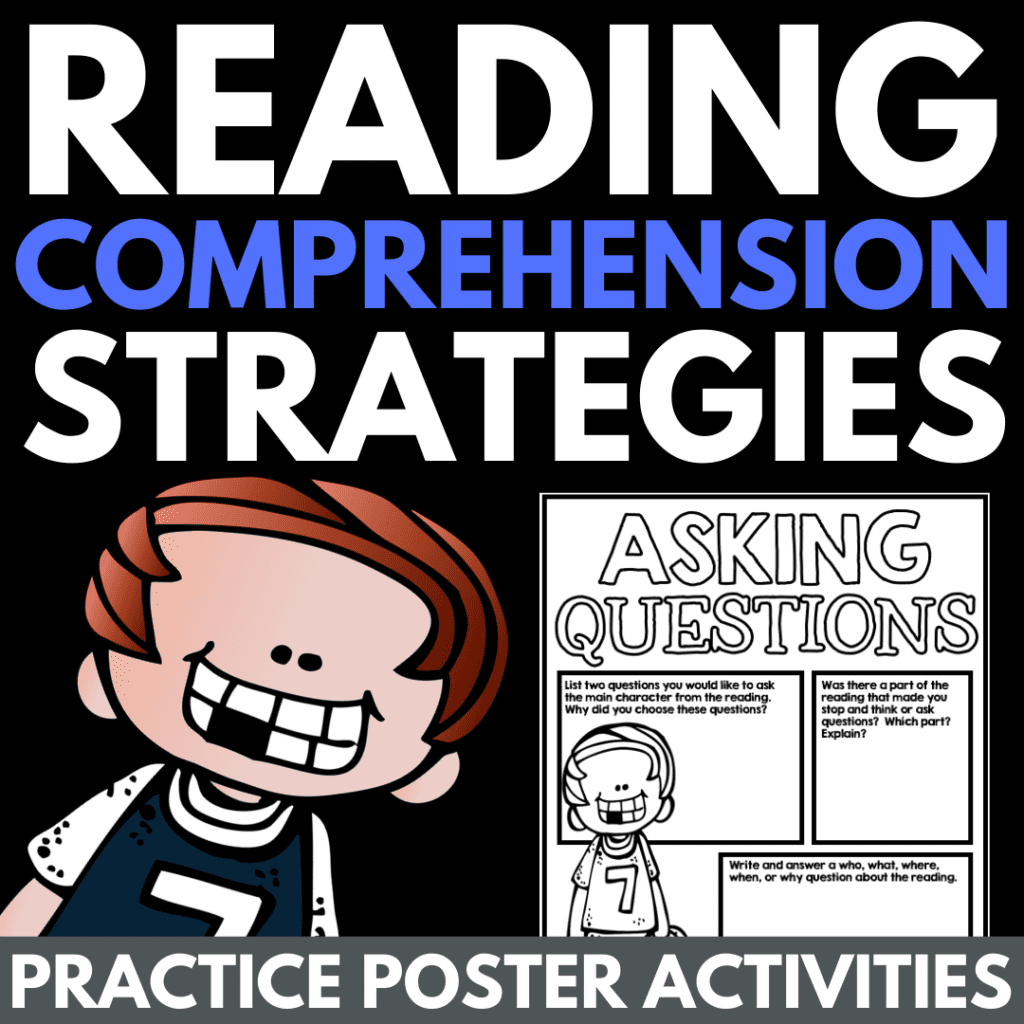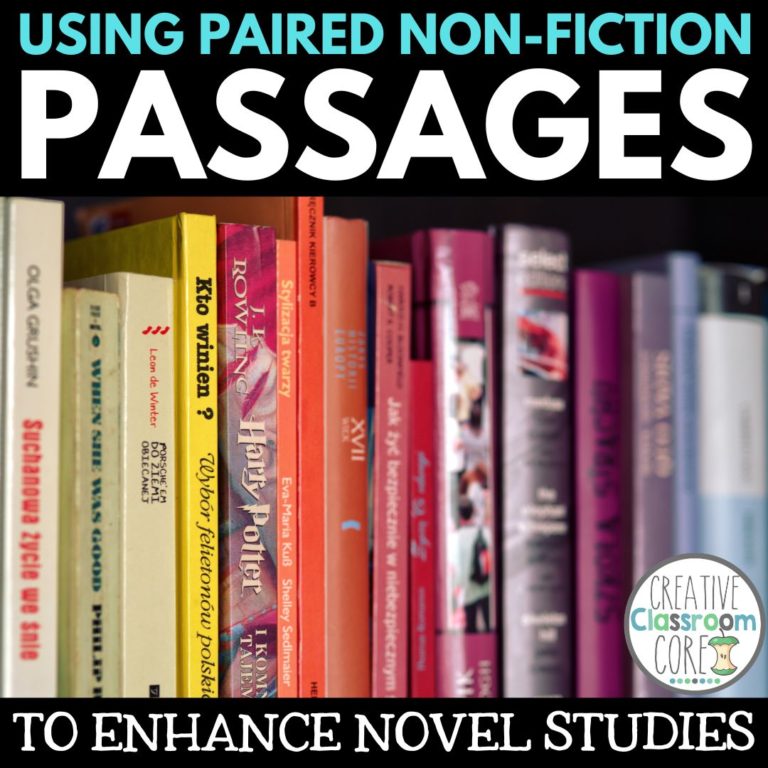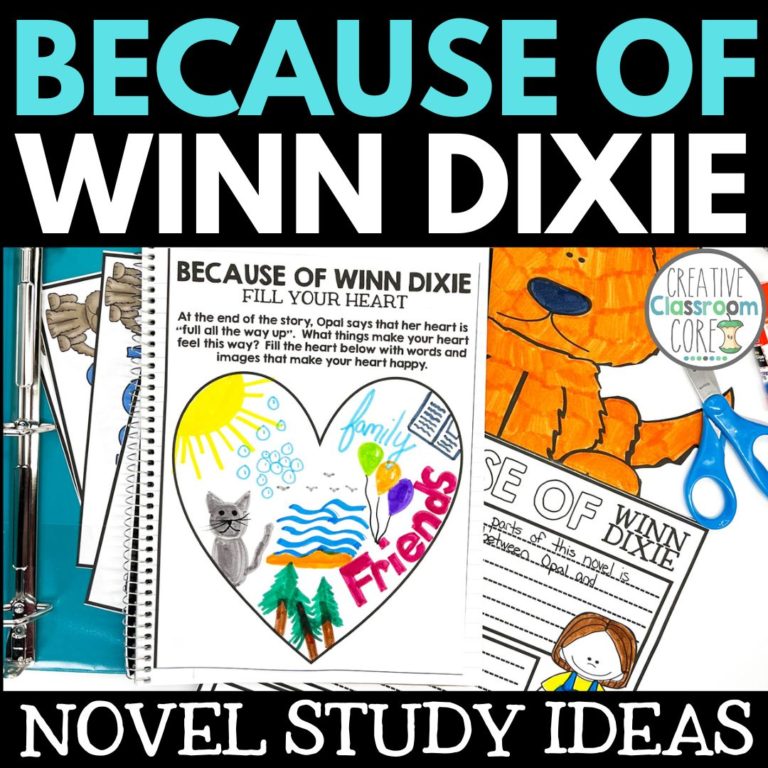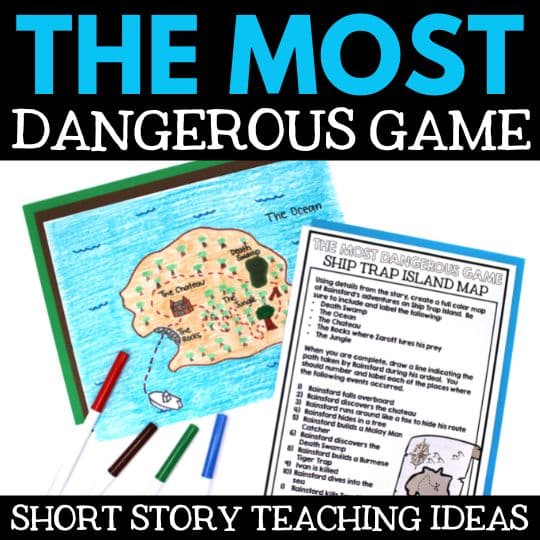Reading Comprehension Strategies – Making Predictions
By MARISSA DESPINS Updated April 11, 2024
Good readers naturally make predictions while reading, without evening realizing it. When a student grabs a book from your classroom library, they make a quick prediction about what the book is going to be about based on the title and cover. After they get few chapters in, they start to predict the ways that characters might respond to certain situations. When they get close to finishing a story, readers start to make guesses about how it will end. Making predictions while reading is clearly super important. However, like all reading comprehension strategies, it takes explicit instruction for students to use this strategy naturally and automatically while reading.
Looking for some free reading comprehension strategies resources that you can print and use in your classroom right away? Click on the image or link below to see all of the reading resources available in my TPT shop!
(This post contain affiliate links which means I make a small commission if you make a purchase, at no additional cost to you. Thank you for your support!)
What are Predicting Strategies?
When it comes to reading comprehension strategies, making predictions is an important one to teach. Predicting helps students to ask questions about text while working on their active reading skills. Actively predicting while reading helps to keep student minds engaged and encourages them to connect to text through refining, revising, and reflecting on their predictions.
For more information on reading strategies, check out our complete guide!
How do Predicting Strategies Help Students to Become Better Readers?
While reading, students attempt to guess what will happen next in a story. This is important because it helps them to anticipate possible problems and solutions related to what is going on in the story.
This complex reading strategy, however, involves more than just trying to figure out what will happen next. In order to make logical predictions, students must ask questions about the text, hunt for evidence to support their thinking, make inferences, and draw conclusions. In order to be successful at predicting, students must practice a wide variety of other reading comprehension strategies!
As an added bonus, predicting while reading naturally makes students want to continue reading to see if their predictions are correct. Anything that encourages more reading is a win in my books!
Great Read Alouds to Practice Predicting Strategies
Picture books are great ways to introduce key reading strategies. They are the perfect way to practice these skills before moving on to more complex text. Below are some of my classroom favorites for practicing this strategy.
Enemy Pie by Derek Munson
“Enemy Pie” by Derek Munson is an engaging and heartwarming children’s book that teaches a valuable lesson about friendship, assumptions, and the power of kindness. The story revolves around a young boy who hopes to get rid of his enemy, a new kid in the neighborhood, with the help of his father’s secret recipe for Enemy Pie. The story serves as a delightful reminder that sometimes, wonderful things can happen when we set aside our preconceptions and give people a chance.
The Sandwich Swap by Queen Rania of Jordan Al Abdullah
Through this simple yet profound narrative, the book encourages children to explore and celebrate differences, showing that unfamiliar does not mean unlikable. It highlights the importance of open-mindedness and the willingness to try new things, which can lead to the discovery of new joys and deeper friendships. Queen Rania’s own experiences and her advocacy for cross-cultural dialogue and understanding inspire the story, making “The Sandwich Swap” a meaningful read that promotes the message of tolerance and unity in a fun and accessible way for young readers.
Duck on a Bike by David Shannon
This is a cheerful and amusing children’s book that celebrates curiosity, adventure, and the joy of trying new things. The story follows a duck who, on a whim, decides to ride a bike around the farm. As Duck pedals past each animal, from the horse to the chicken to the goat, their reactions vary from skeptical to amused, each making their own comments about Duck’s unusual activity. However, Duck’s playful spirit and the fun of riding a bike soon catch on, leading to a whimsical conclusion where all the farm animals join in on the biking adventure, each riding a bike of their own.
Too Much Glue by Jason Lefebvre
This is a lively and humorous children’s book that dives into the world of creativity, messes, and the consequences of going overboard with a good thing. The story centers around a young boy named Matty who loves glue—not just a little bit, but a lot. His passion for crafting and his tendency to use excessive amounts of glue lead to a hilariously sticky situation in his classroom. Despite his teacher’s warnings, Matty pours out so much glue on a piece of paper that he ends up stuck in his own gooey creation, leading to a chaotic and funny rescue effort by his classmates.
Chalk by Bill Thomson
“Chalk” by Bill Thomson is a captivating and imaginative picture book that tells its story without a single word. Through detailed and vibrant illustrations, Thomson brings to life an extraordinary adventure that begins when a group of children discovers a bag of chalk at the playground on a rainy day. What sets this chalk apart is its magical ability: whatever the children draw with it comes to life. The excitement and wonder quickly turn into a thrilling challenge when one of the children draws a dinosaur, setting the stage for an unexpected and heart-pounding sequence of events.
For more great read alouds, check out our holiday favorites, Halloween favorites, and picture books for encouraging a growth mindset!
Looking for resources to practice Questioning Strategies?
Check out these reading comprehension posters in my TPT shop by clicking here or on the image below.
These posters are some of my favorite ways to explicitly practice these important strategies. I really like that they focus on one strategy at a time, and that they can be used with any text.
Looking for some free resources to practice reading comprehension?
Grab this full set of Reading Comprehension Practice Pages by clicking on the image below!
Interested in reading more about reading comprehension strategies?
Check out some of my previous posts below.
Building Reading Comprehension Strategies
Visualization Strategies for Reading Comprehension
Text Mapping to aid Reading Comprehension
Questioning Strategies for Reading Comprehension
Interested in signing up for my email list?
If you are interested in signing up for my email list, you can do so by clicking on the link below. I periodically send out emails with free resources, teaching tips, and exclusive deals. Signing up will also give you immediate access to some of my best selling Interactive Notebook resources – foldable activities, graphic organizers, and other fun activities.
.
